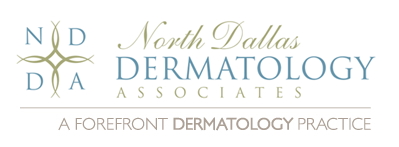Makeup Swapping: Deal Or No Deal?
- Posted on: Sep 21 2015
Recently, I was asked to do an interview with Fox 4 news on the business of internet make-up swapping. I was astounded after hearing this and quickly started to do some research. After finding out some of the less well-known dangers (along with the obvious), I would say I couldn’t imagine any make-up product worth the risk.
Dallas News | myFOXdfw.com
I checked out a couple of the most well known sites. A few factors to consider after perusing the website; the sites post the following in bold: swap at your own risk, all swaps final, instructions to sanitize (acknowledging the contamination risk) and the fact that you still have to pay shipping. You are also giving away a product you already paid money for. Is this really a bargain? Many stores do allow make-up returns, especially the high end stores that many swappers are interested in and trading. There is also an option to swap products that are “brand new in box” or “BNIB”. Again, why not return this item to the store from where it was purchased? There are even reasons why something that has been used once or is labeled “brand new in box” can still be dangerous to your health.
The risk of infection is of course the most obvious and worrisome of the complications of makeup swapping. What most people do not know is that native germs that are not harmful to one person can be harmful to another. We all have our own “normal flora” that keeps our body living in harmony. This is not the same or equal for everyone. Liquid products are especially vulnerable to microorganism growth due to an often moist, dark container. However, pressed face powders, eye shadows and other dry products are vulnerable to oil and microorganism transfer by makeup brushes and sponges. The brushes and sponges often extend beyond the top layer of the product integrating our oils and germs beyond the area that is accessible to sanitize. Also, as far as I could find, there have not been any tests looking at these posted methods to sanitize to show that they are effective.
The most dangerous products to swap are those used around the eyes and mouth. Bacteria and viruses can lead to corneal infection and in rare instances those can lead to blindness. Unfortunately, products that have been used a couple of times are not immune. The applicator alone can carry bacteria back to the product, even after a single use, therefore just using a new applicator does not necessarily decrease risk. Even if the applicator has not been used, but the product has been opened (seal broken), microorganisms can gain access and cause harm. These can be the products advertised as “brand new in box”.
This also brings up the dangers of “testers” at department stores. Multiple users everyday can lead to multiorganism contamination. One study in 2009 found Staph, Strep and E. Coli bacteria in department store makeup tester products.
Rarely, even new products can be harmful. The FDA website recently issued a consumer alert about cosmetic products found to be contaminated with harmful microorganisms. Specifically, the FDA found Citrobacter freundii and Pseudomonas stutzeri in eye shadows and Staphylococcus saprophyticus in lipstick components. These infections are rare, some more common ones include:
Bacteria: Staph Aureus, Strep Pneumonia, Escheria coli, Salmonella, Pseudomonas
Viruses: Herpes Simplex Virus, Adenovirus, Hepatitis, HIV/AIDs
Fungi: Candida Albicans, Trichophyton tonsurans (ringworm), Microsporum
Infestations: Scabies, lice
The most common infections reported from sharing makeup (even among friends and family) include conjunctivitis (pink eye) that can last 2-4 weeks and herpes labialis (common fever blister). The virus that causes fever blisters can be actively shedding and spread without visible break out on the host.
Besides infections there are other risks involved in makeup swapping. Some of the most common causes of allergic contact dermatitis (rash) are found in the preservatives and other ingredients in cosmetic products. Due to the Fair Packaging and Labeling Act (FPLA), cosmetics are required to have ingredient declarations on labels. However, in small packages they may not be printed on package, they can be located on a package insert or on a tablet kept in close proximity of the product at the retailer. If a person needs to avoid certain ingredients or compare different brands it is good to have that information prior to use.
So is all hope lost? Of course not. There is never a complete guarantee of safety when using products around the yes or mouth (used or new), but read on to find out how both the manufacturer and you can work together to put yourself at the least possible risk.
How manufacturer helps to decrease risk:
Cosmetic products themselves do often have anti-microbial preservatives added to help reduce or prevent microorganism growth, even after multiple applications. However, these often take days to clear and/or are not always effective. Furthermore, each product has varying amounts and different types (some more effective than other).
In recent years there has been a high consumer demand for cosmetics that contain natural or organic ingredients. There is a misconception that this makes them safer. Often times if products are labeled natural they are less scrutinized and less tested than synthetic products and pharmaceuticals. Most ingredients are also chemically altered before they can be incorporated into cosmetics, negating the claim of being natural. They are usually without the use of anti-microbial preservatives. Consumers should also beware that some natural products actually contain plant-derived substances conducive to microbial growth.
There also should be a printed date to help determine the safe shelf life of a product. However, according to FDA, the product may expire long before the expiration date if stored under improper conditions (i.e. sunlight, heat or opening prior to sale). There is no way to know the environmental conditions that the cosmetic product endured prior to swapping. Also note that different types of products have very different shelf lives.
How you can help decrease risk:
General/Environmental Guidelines:
Pay attention to the shelf life date printed on the label of the product
Keep away from UV light and heat
Keep liquid products tightly sealed
Clean brushes
Do not blow on brushes or products
Foundations in a pump last longer
Use alcohol 90% to sanitize tweezers, scissors and lash curlers.
Do not add water to any liquid products. This can spur germ growth and lessen the effects of preservatives in makeup
Use a new applicator each time you apply any “tester” makeup at a retail store
Be aware of any changes in the look or smell of any product
Specific Guidelines for products used around the eyes and mouth:
Throw away any makeup that comes into contact with skin that has or shortly after develops infections, even if it is only you using it
Replace any lipstick, liner or glosses that come into contact with a fever blister or anytime while symptoms were present (tingling, burning), even before the sore appeared.
Avoid putting on any makeup on the eyes while distracted or moving. Small scratches can cause a break in the outer protective coating of the eye leaving it vulnerable to microorganism infiltration.
Do not use borrowed products on cracked or dry lips (broken barrier allows for a convenient entryway for infectious agents)
So in conclusion swapping sounds great in theory and we all love a bargain, but with even a small chance of a serious complication you have to ask yourself, is it worth it?
Posted in: Uncategorized





